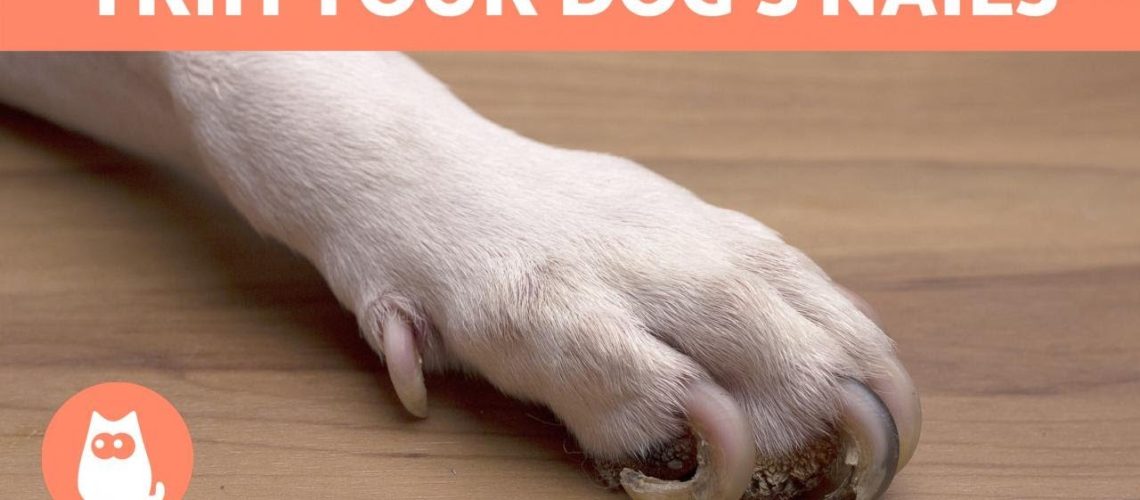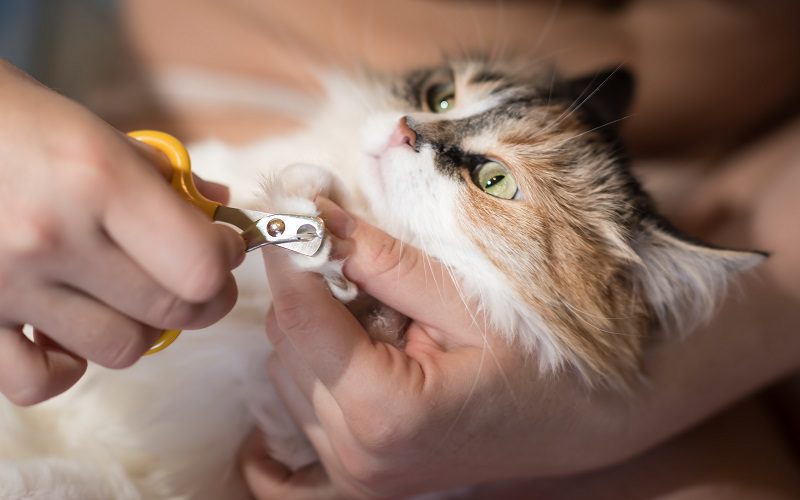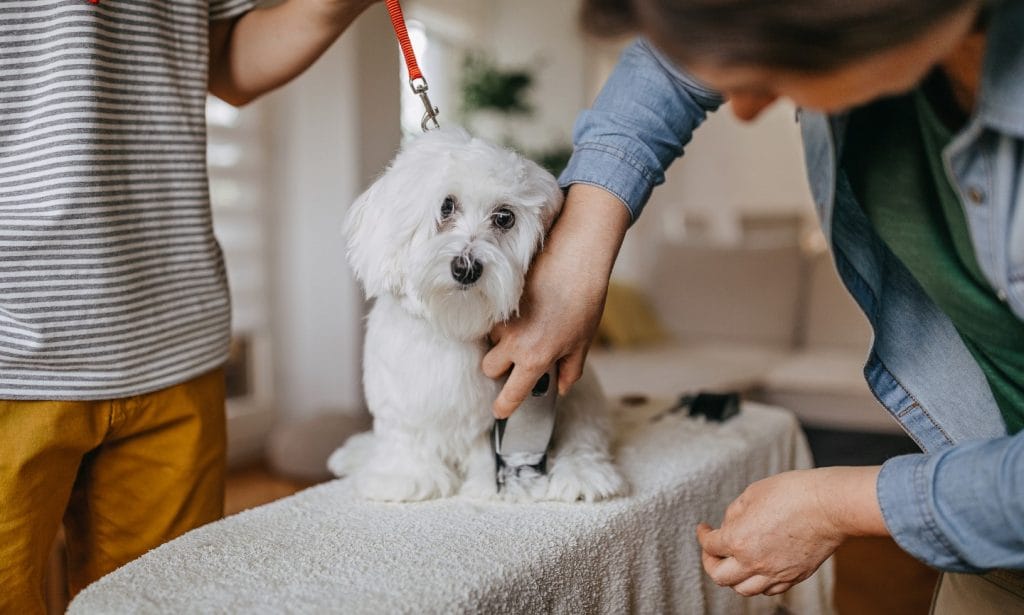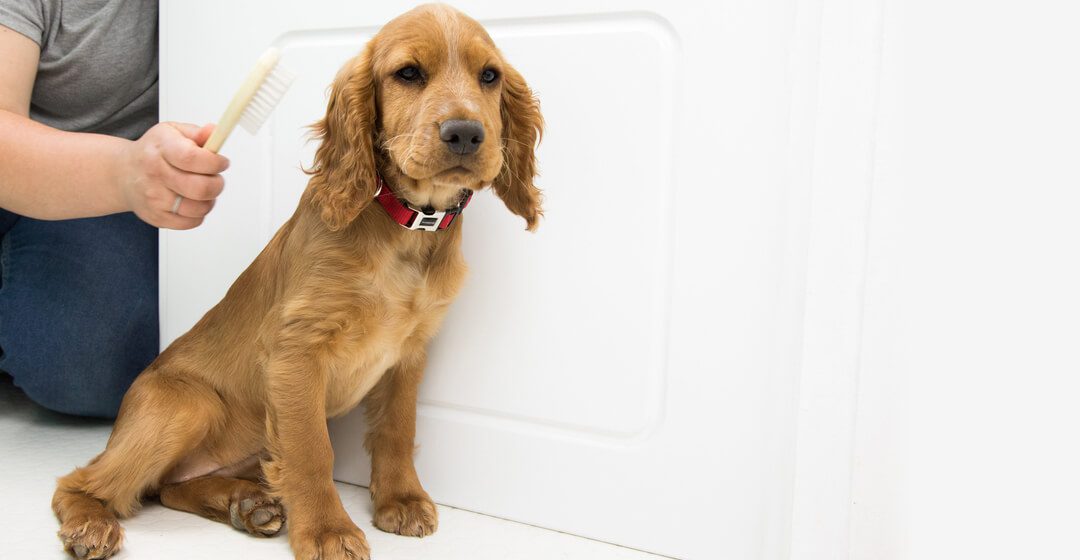In this guide, we will provide you with simple and effective tips on how to trim your dog's nails safely and efficiently.
Key Takeaways:
- Regular nail trimming is essential for your dog's health and comfort.
- Use proper tools such as dog nail clippers or grinders to trim your dog's nails.
- Be cautious not to cut the quick, which can cause bleeding and pain. If unsure, consult a veterinarian or professional groomer.
- Gradually introduce your dog to nail trimming by associating positive experiences and rewards.
- If you are uncomfortable or unable to trim your dog's nails yourself, seek help from a professional groomer or veterinarian.
The Importance of Regularly Trimming Your Dog's Nails
Regularly trimming your dog's nails is an essential part of their overall grooming routine. Long nails can cause discomfort and pain for your furry friend, making it difficult for them to walk or run properly. When a dog's nails become too long, they can curl under and dig into the paw pads, leading to infections or even injuries. Additionally, overgrown nails can snag on objects or get caught in carpeting, causing further pain and potential damage.
Trimming your dog's nails also helps to maintain their balance and posture. When a dog's nails are too long, it can throw off their alignment and put unnecessary strain on their joints. By keeping their nails at an appropriate length, you can help prevent musculoskeletal issues and promote overall health and well-being.
Regular nail trims also provide an opportunity for you to check the condition of your dog's paws and identify any abnormalities or signs of injury. By inspecting their paws regularly, you can catch any issues early on and seek veterinary care if necessary.
In conclusion, regularly trimming your dog's nails is crucial for their comfort, mobility, and overall health. It helps prevent painful conditions and allows them to move freely without any hindrances.
Benefits of Regular Nail Trimming:
- Prevents discomfort and pain caused by overgrown nails
- Maintains proper balance and posture
- Reduces the risk of infections or injuries from curled-under nails
- Allows for regular inspection of paw health
Consequences of Neglecting Nail Trimming:
- Discomfort while walking or running
- Increased risk of infections or injuries
- Misalignment of joints leading to musculoskeletal issues
Signs that Indicate Your Dog's Nails Need Trimming
Overgrown nails can cause discomfort and health issues for your dog.
One of the first signs that your dog's nails need trimming is when you hear clicking sounds as they walk on hard surfaces. This indicates that their nails have grown too long and are hitting the ground. Additionally, if you notice your dog frequently licking or chewing at their paws, it could be a sign of nail discomfort. Overgrown nails can also lead to joint and posture problems, as they can alter the way your dog walks and stands.
To check if your dog's nails need trimming, examine them visually. If the nails extend past the paw pad, it's time for a trim. Be cautious not to wait too long between trims, as longer nails become more difficult to cut and may require professional assistance.
Preparing Your Dog for a Nail-Trimming Session
Create a positive association with nail trimming for your dog.
Dogs can be sensitive about having their paws handled, so it's essential to prepare them for nail-trimming sessions in a calm and positive manner. Start by getting your dog accustomed to having their paws touched regularly. Gently hold each paw for short periods while offering treats or praise as a reward.
Introduce the sound of nail clippers or grinders gradually by letting your dog sniff them without any pressure or noise. Associate these tools with positive experiences by rewarding your dog with treats or praise during these introductions. It may also help to play calming music or use aromatherapy techniques to create a relaxing environment during nail trims.
If your dog shows signs of anxiety or fear during nail trims, consider seeking professional help from a veterinarian or a certified dog trainer who specializes in desensitization techniques.
Essential Tools for Safely Trimming Your Dog's Nails
Gather the necessary tools to ensure a safe and effective nail-trimming session.
Before you start trimming your dog's nails, make sure you have the right tools on hand. The essential tools for safely trimming your dog's nails include:
- Nail clippers or a nail grinder: Choose a tool that you are comfortable using and that suits your dog's nail size and thickness.
- Styptic powder or cornstarch: These can help stop bleeding if you accidentally cut into the quick of the nail.
- Treats or rewards: Use these to reward your dog during and after the nail-trimming session, reinforcing positive behavior.
- A towel or mat: Place this under your dog to catch any nail clippings or provide them with a comfortable surface to lie on during the process.
A Step-by-Step Guide to Trim Your Dog's Nails
Follow these steps for a successful and stress-free nail-trimming session with your dog.
- Choose a quiet and well-lit area where you can comfortably trim your dog's nails without distractions.
- Gently hold your dog's paw and examine each nail, identifying where the quick (the sensitive part containing blood vessels) ends. Avoid cutting into the quick as it can cause pain and bleeding.
- If using clippers, position them perpendicular to the nail, making small cuts at a time. If using a grinder, gently touch it to each nail while providing treats as positive reinforcement.
- Trim the nails gradually, ensuring you don't cut too close to the quick. If you accidentally cut into the quick and bleeding occurs, apply styptic powder or cornstarch to stop it.
- Take breaks if needed, allowing your dog to relax and providing treats as rewards for good behavior.
- Finish by smoothing any rough edges with a nail file or grinder, ensuring your dog's nails are not sharp or jagged.
Techniques to Avoid Hurting Your Dog's Quick while Trimming Nails
Use these techniques to minimize the risk of cutting into your dog's quick during nail trims.
Cutting into the quick can be painful for your dog and may lead to bleeding. To avoid this, follow these techniques:
- Trim small amounts at a time: Gradually trim small portions of the nail rather than attempting to cut off a large section all at once. This allows you to have better control and reduces the risk of cutting too close to the quick.
- Know your dog's nail anatomy: Understand where the quick is located within your dog's nails. Light-colored nails make it easier to see the pinkish area indicating the presence of blood vessels and nerves.
- If in doubt, trim less: It's better to trim less initially and monitor how your dog reacts before proceeding further. You can always trim more later if necessary.
- Keep styptic powder or cornstarch nearby: Accidents can happen even with caution. Having these substances on hand helps stop bleeding quickly if you accidentally cut into the quick.
Frequency of Nail Trimming for Small and Large Dogs
Determine how often you should trim your dog's nails based on their size and activity level.
The frequency of nail trimming varies depending on the breed, size, and lifestyle of your dog. Generally, small dogs with less active lifestyles may require more frequent trims compared to larger dogs who naturally wear down their nails through exercise. As a general guideline:
- Small dogs: Trim their nails every 2-4 weeks to prevent overgrowth and discomfort.
- Medium-sized dogs: Trim their nails every 4-6 weeks, adjusting based on individual nail growth rate.
- Large dogs: Trim their nails every 6-8 weeks or as needed, considering their activity level and natural wear-down.
Dealing with Anxious or Fearful Dogs during Nail Trimming
Implement strategies to help calm anxious or fearful dogs during nail trims.
Nail trimming can be stressful for some dogs, especially those with anxiety or fear-related issues. To help them feel more at ease during the process:
- Practice desensitization techniques: Gradually introduce your dog to nail-trimming tools and procedures in a positive and controlled manner. Reward them for calm behavior and gradually increase the duration of each session over time.
- Consider professional assistance: If your dog's anxiety persists despite your efforts, consult a veterinarian or certified dog trainer experienced in working with anxious animals. They can provide additional guidance and support tailored to your dog's specific needs.
Alternatives to Nail Trimming for Resistant or Scared Dogs
If traditional nail trimming methods are not feasible, consider alternative options for maintaining your dog's nail health.
Sometimes, certain dogs may be extremely resistant or scared of nail trimming, making it challenging to perform the task safely. In such cases, alternative options can help maintain your dog's nail health:
- Grinding: Instead of using clippers, try a nail grinder that files down the nails gradually. This method may be less intimidating for some dogs.
- Scratching posts or mats: Provide your dog with appropriate scratching surfaces that can naturally wear down their nails over time.
- Regular walks on abrasive surfaces: Taking your dog for walks on concrete or asphalt can help naturally file their nails as they walk and run.
- Veterinary assistance: If all else fails, consult with a veterinarian who can provide professional nail trims or recommend sedation options if necessary.
| Trimming Your Dog's Nails | |
| Remember, a little patience and practice can make nail trimming a breeze! | |
| Benefits of Regular Nail Trimming: | Tips for Successful Nail Trimming: |
|
- Prevents painful overgrowth - Reduces the risk of injury - Promotes healthy foot posture |
How do you know how short to cut a dog's nails?If your dog has nails that are light in color, you should be able to easily see the quick, which is the sensitive area within the nail. When trimming these nails, you should aim to cut about 2-3 mm away from the quick to prevent any discomfort for your dog. However, if your dog has dark-colored nails, it may be difficult to see the quick. In this situation, it is best to only trim a small portion at the very end of the nail. What direction should I cut my dogs nails?When trimming your dog's nails, make sure to only cut the tip, straight across. Don't forget to trim the dewclaws on the inner side of the paw. Be careful not to cut too far and reach the curve of the nail, as this is where the quick is located (the pink area that contains blood vessels). Cutting into the quick can be painful and cause bleeding. What happens if I don't trim my dog's nails?If you have a mature dog, it is important to regularly trim their nails to avoid issues such as reduced grip, mobility problems, and potential discomfort. The frequency of nail trimming should be every 2 weeks, taking into account the growth rate of your dog. At the minimum, nails should be trimmed every 4 weeks. How often should you trim a dogs nails?Dogs should have their nails trimmed regularly, usually every 3-4 weeks. Unfortunately, many owners tend to wait too long between trimmings, which can result in various health problems for the pet. Cats, on the other hand, should have their claws trimmed every 10-14 days to maintain their overall health. Is it better to cut or grind dog nails?Both clipping and grinding are effective and safe methods for trimming your dog's nails. Clippers are more affordable and quieter, while dremels are louder and more expensive but offer greater precision and efficiency. Regardless of the method you choose, nail maintenance remains a difficult and inconvenient task for dog owners. Do you cut dogs nails vertically or horizontally?It is important to trim your dog's nails in a vertical direction, similar to how you would trim a person's nails. If you accidentally cut the quick of your dog's nail, they may experience sudden pain and react. In such a case, there may be bleeding, and it is important to stop the bleeding promptly. More Reads
Dr. Clara Bennett
Hello, fellow pet enthusiasts! I'm Dr. Clara Bennett, your go-to expert on all things pets. With a background in veterinary medicine and a passion for nutrition, I've spent years diving deep into the world of cats, dogs, birds, horses, and the products that keep them thriving. From the English countryside, I've witnessed the magic of animals and am here to share my knowledge, ensuring your pets receive the best care. Together, let's master the art of pet care!
All Posts »
Next Steps In Mastering Cat CareNext Steps In Mastering Dog CareJoin Our NewsletterSubscribe to receive our latest updates in your inbox! |
















